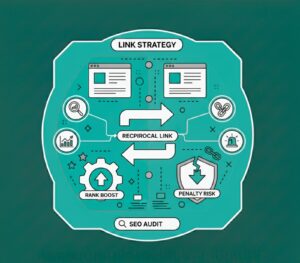Mastering SEO Copywriting: How to Write Content That Ranks and Resonates
Blogs | Category
Written By: Lauren Davison
Introduction
In 2025, writing for SEO is no longer just about placing keywords on a page. Today, it is about creating content that both search engines can understand and readers actually enjoy. SEO copywriting is the art of balancing optimisation with authenticity. Done right, it increases visibility, builds trust, and drives engagement.
For mid-to-high-end UK businesses, SaaS platforms, professional services, and enterprise-level brands, mastering SEO copywriting is not optional. It is a strategic tool that can generate leads, boost conversions, and deliver measurable ROI.
Table of Contents
What Is SEO Copywriting?
SEO copywriting is the process of crafting content that satisfies two audiences. It includes humans and search engines. It is not about stuffing pages with keywords. Instead, it focuses on delivering useful, relevant, and well-structured content that answers questions and solves problems.
Modern SEO copywriting prioritises user intent, clarity, and authority. It is about writing naturally while ensuring search engines can easily interpret your content.
The Evolution of SEO Copywriting
A decade ago, SEO copywriting was often synonymous with keyword stuffing. Marketers would cram their pages with phrases and hope Google ranked them. Today, search engines are smarter. They reward content that is genuinely helpful and written for humans.
Why It’s Critical for Modern Digital Marketing Success
Strong SEO copywriting drives organic traffic, increases leads, and builds brand credibility. For marketing managers and digital strategists, it is a core strategy to attract prospects and convert them. Without it, even high-quality products and services can remain invisible online.
Understanding the Balance Between People and Search Engines
SEO copywriters must strike a delicate balance. Writing for humans means engaging, readable, and valuable content. Writing for search engines means structured, optimised content that signals relevance. Ignoring either side leads to missed opportunities.
Writing for People: Clarity, Tone, and Engagement
Content should be simple, clear, and relatable. Avoid jargon unless your audience is highly technical. Use short sentences and paragraphs to make reading easy. Address pain points your audience faces and offer solutions. For instance, an e-commerce manager wants actionable tips on boosting online sales, not abstract advice.
Writing for Search Engines: Structure, Tags, and Semantic Relevance
Technical SEO is just as important. Proper headings, meta tags, internal links, and keyword placement help Google understand your content. Use semantic keywords such as “user intent content” or “on-page SEO techniques” naturally. These phrases improve discoverability without sounding forced.
The Key Elements of Effective SEO Copywriting
To create high-performing content, focus on these core elements:
- Keyword Research: Identify primary, secondary, and long-tail keywords that match your audience’s intent.
- Content Structure: Use headings, subheadings, and internal links to make content easy to navigate.
- Calls to Action: Encourage readers to act, download, subscribe, or contact.
- Readable Formatting: Use bullet points, short paragraphs, and visuals to make the content digestible.
Keyword Intent and Placement Strategies
Understanding keyword intent is essential. Focus on informational, navigational, and transactional queries. Place keywords naturally in headings, opening paragraphs, and throughout the body. Long-tail keywords often attract more qualified traffic.
The Role of Headings and Content Hierarchy
Headings guide readers through your content and help search engines understand your page structure. A logical hierarchy improves both readability and SEO.
How CTAs Improve Both UX and SEO Performance
Well-placed calls to action reduce bounce rates and increase conversions. They signal to Google that your page provides value, which can improve rankings.
Techniques to Write SEO-Optimised Yet Engaging Content
Creating content that performs well for both humans and search engines requires strategy. Here are practical tips:
- Start by addressing your audience’s real pain points.
- Integrate keywords naturally within sentences. Avoid awkward phrasing.
- Maintain a consistent tone of voice.
- Use latent semantic indexing (LSI) keywords to expand relevance.
- Write compelling meta titles and descriptions to boost click-throughs.
Crafting SEO-Friendly Introductions and Conclusions
Your introduction should hook the reader immediately. Highlight a problem or question your audience cares about. Your conclusion should summarise key points and provide next steps. Both sections are great places for keywords and CTAs.
Using Storytelling and Emotion in Optimised Copy
Stories resonate. Share case studies, client experiences, or hypothetical scenarios. Emotionally engaging content keeps readers on the page longer and improves user experience signals, which helps SEO indirectly.
On-Page SEO Practices Every Copywriter Should Follow
Technical on-page SEO ensures your content is easy to crawl and index. Key practices include:
- Optimising title tags, meta descriptions, and headers.
- Adding alt text to images to improve accessibility and search visibility.
- Implementing internal and external links for context and credibility.
- Optimising URL structure and content length to ensure clarity and completeness.
How On-Page SEO Boosts Visibility
A well-optimised page signals relevance to search engines. Clear headers, structured content, and semantic keywords make it easier for Google to understand your topic.
Tools That Help You Optimise Content Effectively
Tools like Ahrefs, SEMrush, and Yoast SEO provide insights on keyword usage, readability, and optimisation opportunities. They help identify gaps and improve content performance.
Common SEO Copywriting Mistakes to Avoid
Even skilled marketers can make errors that hurt rankings and user experience. Common mistakes include:
- Keyword stuffing: Overusing keywords makes content unnatural.
- Duplicate content: Reduces authority and may trigger penalties.
- Poor structure: Confuses readers and bots alike.
- Ignoring user intent: Content that does not solve real problems fails to engage.
Why Over-Optimisation Can Hurt Rankings
Excessive keyword focus or awkward phrasing can be penalised by Google. Content must feel natural while being discoverable.
How Poor Readability Impacts Bounce Rate
Dense, long-winded content drives readers away. High bounce rates send negative signals to search engines, reducing overall ranking potential.
Measuring the Success of Your SEO Copywriting
It is not enough to publish content. You must track performance:
- Organic traffic growth: Are more people finding your content?
- Click-through rate: Are meta titles and descriptions compelling?
- Average engagement time: Are users reading and interacting?
- Keyword ranking improvements: Are your targeted phrases rising in SERPs?
- Conversion rate: Are visitors taking the actions you want?
SEO Tools for Performance Tracking
Platforms like Google Search Console, SEMrush, and Ahrefs help monitor traffic, rankings, and engagement. Use insights to refine and improve future content.
Using Insights to Refine Future Content
Data-driven adjustments are essential. Learn which topics and keywords perform best. Adjust structure, CTAs, and content length accordingly.
Bonus Tip
Always put the reader first. Solve their problem before worrying about keywords. Valuable, human-centred content will naturally perform well on search engines when paired with SEO best practices.
Conclusion
SEO copywriting in 2025 is about value first, optimisation second. The best marketers know that ranking high is not just about algorithms; it is about delivering genuinely helpful content.
For mid-to-high-end UK businesses, SaaS platforms, professional services, and enterprise brands, clear, engaging, and optimised content can drive traffic, increase leads, and build trust.
Ready to make your content work harder? Explore our SEO copywriting services and create content your audience loves, and that search engines reward.

Written by - Lauren Davison
Introducing Lauren – one of our content writers who has a flair for SEO and creative strategy!
With a Master’s Degree in Creative Writing, Lauren has niched down into SEO and content writing.
Outside of work, she loves watching the darts, reading and the pub on the weekend.
Want some more?
Latest Insights & News

Revolutionising Marketing: The Rise of Situational Content Strategies
Situational content strategies involve tailoring content to specific moments, contexts, or audience behaviours. By aligning content with real-time trends, seasonal needs, and user intent, brands can increase relevance, improve engagement, and strengthen SEO performance.

Smart Ways to Identify and Fill Content Gaps Fast: A Complete Strategy Guide
Content gaps refer to missing information, unanswered questions, or underserved topics in your existing content. Identifying these gaps helps you create targeted, high-value pages that improve search visibility, satisfy user intent, and outperform competitors.

Reciprocal Links in SEO: Do They Still Boost Rankings or Risk Penalties?
For the keyword “reciprocal links SEO,” focus on explaining how reciprocal linking works today. Reciprocal links are not harmful by default, but Google can flag excessive or manipulative link exchanges. To stay safe, only exchange links when they are contextually relevant, natural, and valuable to users.




